April 19, 2014
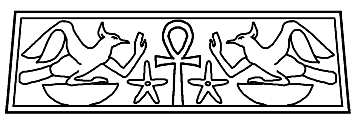
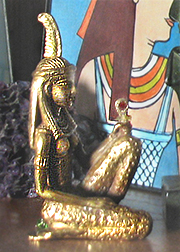
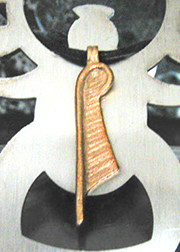
Ma'at statue, Feather of Ma'at pendant...
Ma'at, both the concept, and the Goddess, is the foundation of all Kemetic religion. In Egyptian mythology, the goddess Ma’at “personifies the concepts of truth, justice and cosmic order” (also known as ma’at (spelled with small ‘m’). You can see the goddess’ headdress is the feather which represents the concept.
"Maat shares her feather emblem with the air god Shu. She was sometimes equated with Shu's sister, Tefnut. The gods were said to 'live on maat,' and the goddess was identified with the basics of life: air to breath, bread to eat, and beer to drink. From the fourteen century BCE onward, Maat was often shown as a winged goddess. Like Isis, she could revive the dead with the air generated by her beating wings." (Geraldine Pinch, _Egyptian Mythology: A Guide to the Gods, Goddesses, and Traditions of Ancient Egypt_, page 160)
"There is a fundamental notion, abstract yet vitally real, which colours all the myth, the morality and the life of the ancient Egyptians. This is Maât. Divine entities and human beings alike live by Maât, in Maât and for Maât.
"This single name expresses all notions of equilibrium and poise."..."The scales, and Maât's symbol, the feather, support a plumb line at the end of which hangs the plumb bob. Maât represents therefore accuracy, honesty, fairness, faithfulness, rectitude, and in this aspect becomes the emblem of the judge, who in the late period wore a small Maât of lapis lazuli on his breast. Maât is the symbol of Justice and Truth, of authenticity, legitimacy, integrity, legality.
"Maât is also the symbol of harmony, in the sense of accurate tones and perfect musical accords. In the New Kingdom (after1567 BC) harps are often decorated with a figure of Maât." (from _Egyptian Mysteries_, by Lucie Lamy, page 17)
Jan Assmann is an Egyptologist who has also studied the meaning of Ma'at:
"Ma'at guarantees that what was valid yesterday will hold good today, that a person will stand by what he said and did yesterday, that he will respond to what others have said and done. Ma'at is, thus, a consistency of action beyond the limits of the day, a form of active remembrance that provides the basis of trust and successful accomplishment. 'All actions are interjoined,' says the Instructions for King Merikare."
(From _The Mind of Egypt: History and Meaning in the Time of the Pharoahs_, by Jan Assmann, page 129)
“All actions are interjoined,”
The study of science shows the interconnectedness of life. "Your Inner Fish", a science program that aired on PBS recently, illustrates this perfectly. The narrator Neil Shubin, explains the similarity of bone structures in human arms and hands, bird wings and fish fins, "One bone, two bones, many bones." The study of ecology reveals that what hurts the birds of the air and the fish of the water will hurt us as well. Those that harm the environment in the process of short term financial gain are harming their descendents.
When we understand this interconnection, we can understand, as Lucie Lamy explains:
Heka
The glyphs which make up the word 'Heka' are the twisted rope and the arms and hand glyph (which by itself means the Ka, our "life force"). The Egyptian word 'Heka' which we understand to mean 'magic', is literally translated "to employ the Ka".
If we look at the glyph for 'Ka', note the part of it which cooresponds to the elbow and how this relates to the height position of the elbow. For the height of the elbow is at about the level of what other traditions know as the 'fire chakra'(Manipura). One Pyramid text declares “Unis’s powers are on his torso.” (_The Ancient Egyptian Pyramid Texts_, translated by James P. Allen, page 51)
A frequent phrase concerning possessing magical powers is, “’…I have filled my belly with magic…” (Coffin Text spell 239), “I have called to mind all the magic which is in my belly.”
(Coffin Text spell 657), both via Ancient Egyptian Magic by Bob Brier, pages 124, 126)
What can we do with this store of energy? There are many possibilities. The most basic is sending forth blessings from 'the belly'. Such blessings can transcend time and space and will reach their target.
Ka energy has a connection to to what the Chinese call chi or ki:
http://art-energy.org/aboutartenergy.html:
Singing, using the diaphragm, is also using the ka/chi, and it is the reason why singing can have such magical transformative effects upon people. When the singer sends forth a blessing, the audience receives it richly.
In addition to the energy an artist invests in a piece, intuitive art can serve as divination and gateway to the numinous. Historically inspired art also serves as gateway to the divine, for by understanding the ancient magical symbolism, the artist revives it and brings it to modern eyes. It then is as potent as it was when Seti I commissioned his temple artwork.
The imagery in Seti I's temple, even though I've only seen it in photos, speaks to me with all the magical potency that he intended. We can invest objects with our Ka energy, thereby communicating this to the sensitive who can receive the message in the future. I can attest to the intensity of heka stored in a Was scepter I saw in an exhibit many years ago. Things that may not appear magically significant can be so invested. I've heard of granny quilters placing blessings in their quilts with each stitch. Those that wrap themselves up in those quilts feel granny's blessings every time they use that quilt.
There is also the heka of words. The ancients' word for their hieroglyphs (literally 'sacred writing') is "medu netjer", words of the Gods. The more I study the ancient glyphs, I can see all the potent meaning they invested in them. But any language has potency if we understand the power of words. To frame a thing in thought takes words. The power of our thoughts can transform our lives. There's an old Bible proverb, perhaps 'newer' than Ptahhotep's maxims, "As a man thinketh in his heart, so is he." I give strength to what I think about.
When emotions can push us this way and that way, it can take a real effort of Will to focus on positive things. Some may say it is not as simple as that. But speaking only for myself, if I turn my thoughts to the things that nourish my soul, I feel blessed. I listen to good music, (in which the musician invested their blessings), I look at beautiful art, (in which the artists invested their sense of harmony, beauty, and perhaps even a sense of light hearted play), I walk about in nature and look at the beauty of creation, (or being more couch-bound, watch a program about fascinating critters), and I am amazed. In all these ways, I receive blessings.
It is vitally important that all of our magical efforts be in accord with ma'at. Through understanding our interconnectedness, what we desire with our Will may be transformed. What Ego may tell us is a fit thing to which to drive our Will, Higher Self may give better counsel towards a goal that will give true happiness. Ego may whisper in our ears, "Wealth, fame, acclaim...", and it may seem seductive. But Higher Self will tell you, as it did to Ptahhotep: "Guard yourself against the blemish of greediness, For it is a grave affliction of an incurable disease", for "it creates dissention", embittering, alienating, and isolating ourselves from our friends, it is "a combining of everything which is hateful." Ptahhotep despaired that this affliction is "incurable", but through grace and transformation, the greedy soul can change. We can come to see what is the path of greater happiness. We can see this wisdom,
as did the Proverb writer, "Better a dry crust with peace and quiet than a house full of feasting, with strife." - New International Version.
So we can use our heka of intent to make our own environment peaceful. We may not have enough heka potency to make the whole world peaceful, but we can transform our own world. And perhaps our adoration of Ma'at may inspire someone else, perhaps even far away, that we may never see, to lift their heart up and have hope. For between our souls are invisible threads of connection.
The Sacred Breath (Dua, aka Communion with the Gods)
We cannot continue to exert our Ka without regularly refreshing it.
Using the breath to meditate upon the Gods, thinking of our particular Netjer's characteristics while inhaling deeply is a good way to refresh our life force. 'Breath' is directly connected with 'worship' in an interesting quote: “I have explained them [the documents]. Since I have explained them, I will know how to worship [snsn, literally ‘breathe’]” - (Edward P. Butler, "Opening the Way of Writing: Semiotic Metaphysics in the Book of Thoth")
The ancient iconography has very explicit symbolism regarding the strength of the 'intake'. The Fifth Dynasty pharaoh Niuserre is shown being suckled by Sekhmet, and I've used an illustration of this as inspiration for my image below. It's a 'generic' pharaoh, but as Seti I is such a favorite, that's who I'm seeing:
To feed our Ka by "feeding on the Gods", how does this please the Gods? Aren't we tapping their energies and 'taxing' them? Ah, but to feed on the Gods, we must REMEMBER them, and in this process of remembering, they are 'given life'. They are given a chance to reside in our hearts, and thereby have another opportunity to carry out their desires (their Will). We will be attracted to Gods whose goals are in alignment with ours, and vice-versa, they are similarly attracted, a win-win situation.
To further illustrate my point, the message on the ma'at plinth of a Ptah statue now at the Turin museum is:
There is another breath-oriented tradition which focuses on receiving and sending: "Tonglen is a Tibetan word which means sending and taking. This practice originated in India and came to Tibet in the eleventh century." (Source). Its focus is a bit different, however, concentrating on embracing suffering. While embrace of suffering is necessary as Osiris willingly accepts his fate, the cyclical breath focus I am talking about is different.
While the focus of the outward breath is similar, "As you breathe out, imagine you are sending out the radiance of loving-kindness, compassion, peace, happiness, and well-being to this person", the focus of the inward breath is different. To send out those blessings, we must have first received those blessings. And this is where the feeding of the Ka is most important.
We cannot have balance (ma'at) within ourselves, unless intake does not match outgive.
It is a cyclical, circular process, this renewing and being renewed. As I am renewed, so then I can renew. If this cycle is interrupted, then Ma'at has been interrupted and chaos and 'non-being' enters.
And whether it is the breath, symbolized by the Netjer holding the ankh to the recipient's nose, or the intake of spiritual nourishment, symbolized by the Netjerit offering the breast to the recipient's mouth, it means the same process.
As I've said before, both the goddess Ma'at and the god Shu (god of the air) share the feather emblem.
"In CT II, 35c-36b [80], we read in an address to Atum:
'Breathe your daughter Ma'at, place her for yourself at your nose, that your heart may live! They will not be far from you, i.e. your daughter Ma'at and your son Shu, whose name is Ankh'".
(This article has been written in response to the Kemetic Roundtable topic of "Living Kemeticism".)
acknowledging that we are not isolated beings, is having as Universalist Unitarians' word it "Respect for the interdependent web of all existence of which we are a part."
Ma'at "is consciousness itself, and also the individual consciousness that each person carries in his heart, for she is both the motivating force and the goal of life. She is invoked on all occasions; she is omnipresent. Maât moves and directs existence, and Maât is its ultimate treasure." (from _Egyptian Mysteries_, by Lucie Lamy, page 17)
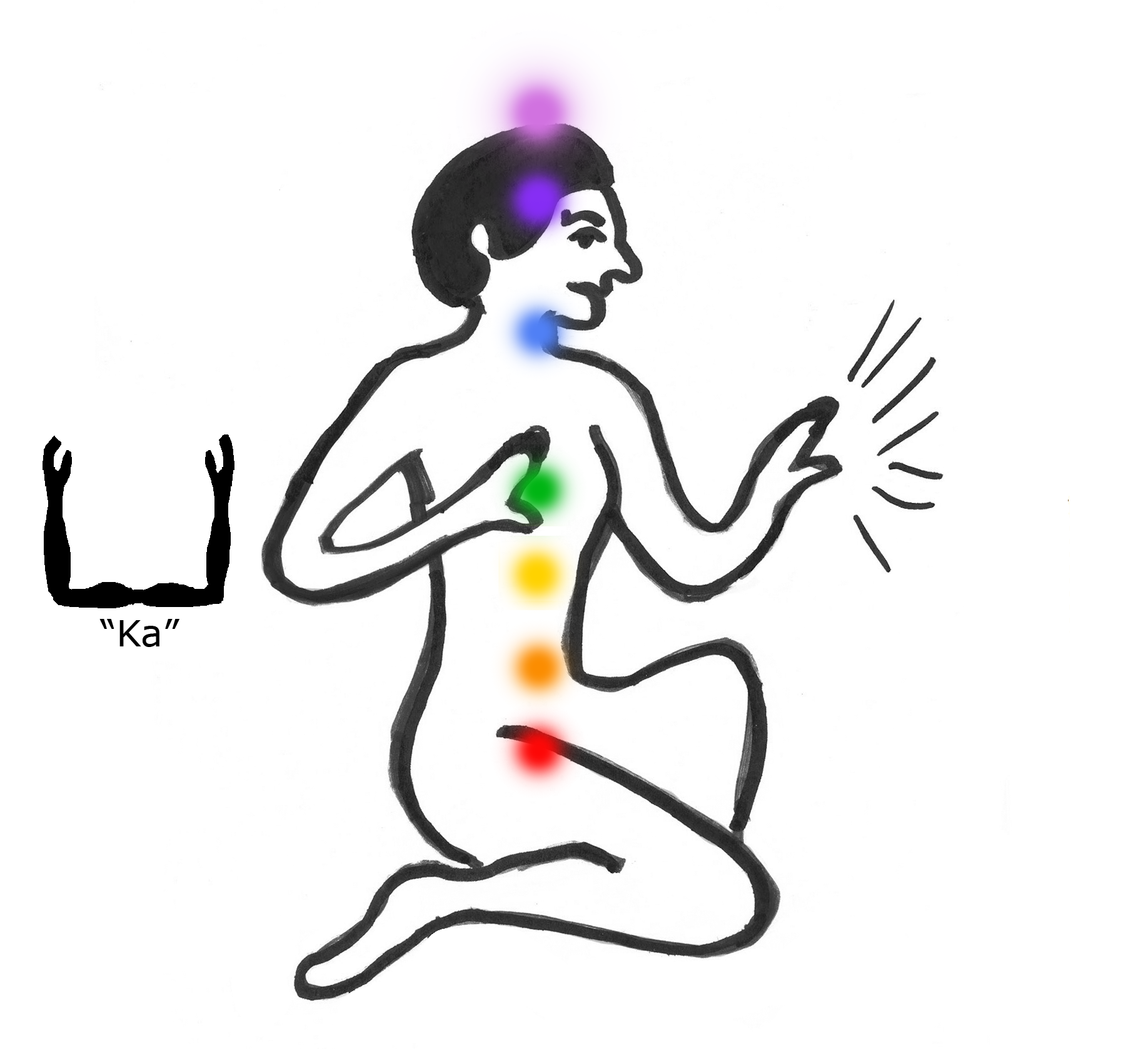
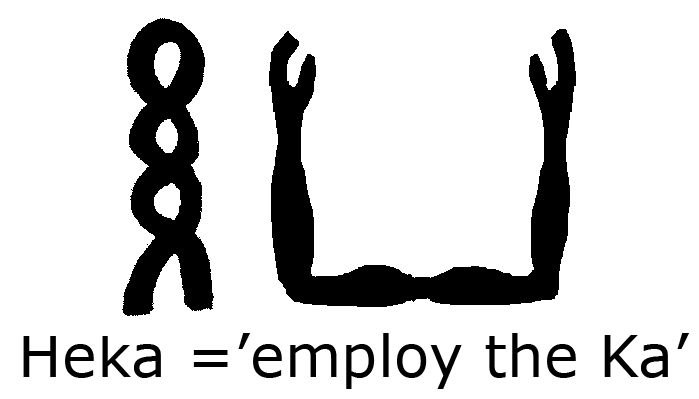
"The vitality, life force, energy, quickening that you translate into action is qi. And it’s not hard to recognize.
Consider a work of art that has moved you deeply. Whether it’s a play, a musical composition, a painting, or a dance, chances are that, more than the words, notes, colors or choreography, you were affected most by the energy of the piece. As musician and teacher of “Qi for Creativity,” John Voigt explains, “What makes any art great is the use and communication of the energy of life. Most listeners, viewers, readers only subliminally sense this vitality. They do not know it in the verbal part of their minds, but they demand it from any art they choose to experience. Without that life energy—what we call qi—any art is lifeless, academic, weak.” [3] (Source: qi-encyclopedia.com)
"Qigong means energy work. It’s Chinese and sometimes spelled ch’i (or chi) kung, and pronounced “chee gong.” Its conceptual foundation is what Art Energy is based focused mental intention. In the act of pure creation they then become one.
Great artists in all the art forms do this and have done this—usually intuitively--throughout the ages."
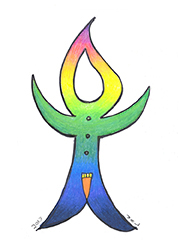
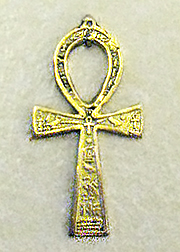
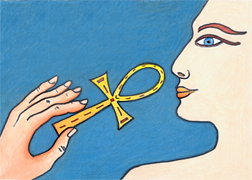

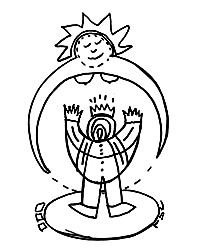
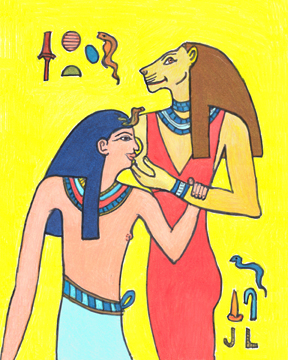

"All the people (rekhyt birds) worship (dua), thereby taking in life (ankh)

Star, ka-hands up - dw3, praise, worship, verb, source Faulkner, page 310
(Harco Willems, The Coffin of Heqata: (Cairo JdE 36418) : a Case Study of Egyptian Funerary ..., page 278)